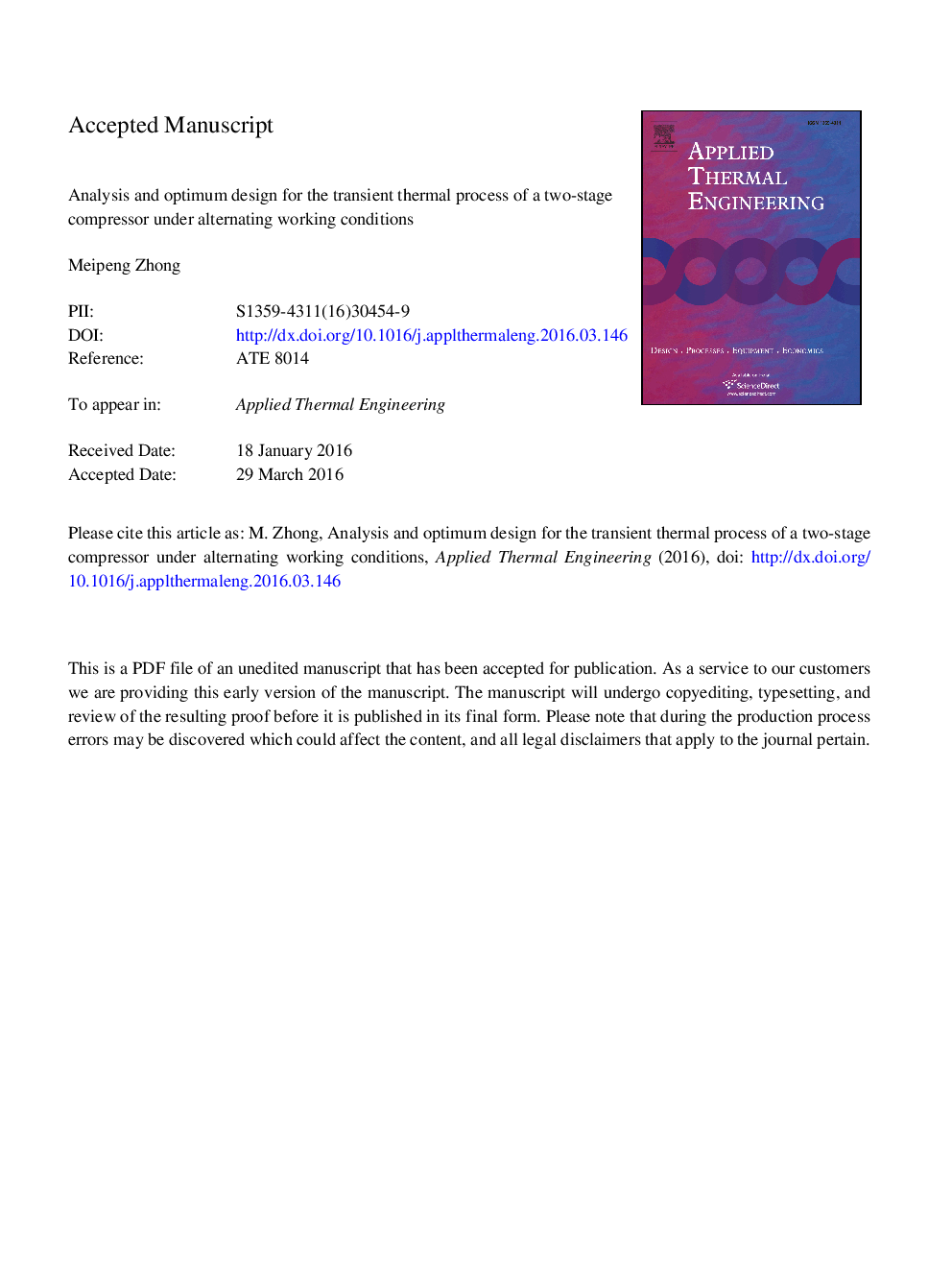| Article ID | Journal | Published Year | Pages | File Type |
|---|---|---|---|---|
| 7047512 | Applied Thermal Engineering | 2016 | 30 Pages |
Abstract
Because of the limitations of isobaric ratio designs of two-stage compressors, this paper presents a new method for mathematically modeling the compressor's transient thermal processes. The model divides the whole working process into seven cases based on the different air quality exchanges among the high- and low-pressure cylinders and storage tank. Expansion, compression, exhaust, and suction equations for high- and low-pressure cylinders were established under several conditions to better describe the actual operation of the two-stage compressor. Programming was performed with C and MATLAB; a computational analysis was performed on the transient thermal process of the two-stage compressor to obtain optimized the structural parameters of the two-stage compressor. An experiment was performed to compare two-stage compressors designed according to the isobaric ratio and the proposed transient thermal simulation. The experimental results showed that the two-stage compressor designed based on the transient calculation had a lower power consumption under the same displacement and backpressure conditions. Therefore, the proposed method for analyzing the transient thermal process is of significant relevance to compressor design optimization.
Keywords
Related Topics
Physical Sciences and Engineering
Chemical Engineering
Fluid Flow and Transfer Processes
Authors
Meipeng Zhong,
